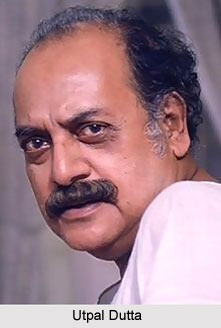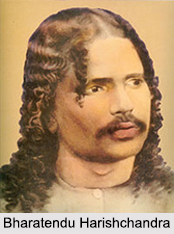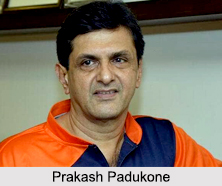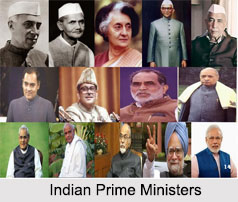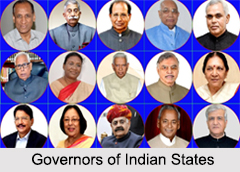 Governors of Indian States and Lieutenant Governors of the Union Territories of India are the constitutional head of each of the 29 states and 7 Union Territories. The Governor is appointed by the President of India for a term of 5 years, and holds office at the President"s pleasure. On the other hand, it should be observed that in conformity with the measures of the Indian Constitution, the governor acts as the nominal head whereas the real power remains within the periphery of the Chief Minister and with the council of ministers of the Chief Minister.
Governors of Indian States and Lieutenant Governors of the Union Territories of India are the constitutional head of each of the 29 states and 7 Union Territories. The Governor is appointed by the President of India for a term of 5 years, and holds office at the President"s pleasure. On the other hand, it should be observed that in conformity with the measures of the Indian Constitution, the governor acts as the nominal head whereas the real power remains within the periphery of the Chief Minister and with the council of ministers of the Chief Minister.
Power of Governors of Indian States
Governors of Indian States and Lieutenant Governors of the territories of India have analogous powers and functions at the state level as that of the Indian President at Union level. The Constitution gives executive powers of the state to the Governor. Different types of powers including the Executive Powers, Legislative Powers and also the Discretionary Powers are also given to the Governors. In the appointment of the Chief Minister of Indian State, the Governors perform as the main person. In the appointment of the Council of Ministers, the instrumental role player is the Governor. The Governor also plays a cardinal role in the appointment of the Judges of the District Courts.
In contrast, the Governor writes the sessions of both Houses of the State Legislature and holds over them. The Governors are entrusted with the power to dissolve the State Legislature or the Vidhan Sabha. The Governor has the power to earmark certain bills for the President. At certain situations the Governor can act according to own judgment. It is very important on the part of the Governors to act in accordance with the recommendation of the Council of Ministers that is headed by the Chief Minister, and thereby to take decisions. These are enforced at the critical situations, and are called the Discretionary Powers of the Governor.
Governors of North Indian States
The present Governors of North Indian States are discussed below:
Jammu and Kashmir - Satya Pal Malik
Himachal Pradesh - Acharya Dev Vrat
Punjab - V. P. Singh Badnore
Uttarakhand - Baby Rani Maurya
Haryana - Satyadev Narayan Arya
Rajasthan - Kalyan Singh
Uttar Pradesh - Ram Naik
Governors of South Indian States
The present Governors of South Indian States are discussed below:
Andhra Pradesh - E. S. L. Narasimhan
Karnataka - Vajubhai Vala
Kerala - P. Sathasivam
Tamil Nadu - Banwarilal Purohit
Telangana - E. S. L. Narasimhan
Governors of East Indian States
The present Governors of East Indian States are discussed below:
West Bengal - Keshari Nath Tripathi
Bihar - Lalji Tandon
Jharkhand - Draupadi Murmu
Odisha - Ganeshi Lal
Governors of West Indian States
The present Governors of West Indian States are discussed below:
Goa - Mridula Sinha
Gujarat - Om Prakash Kohli
Maharashtra - C. Vidyasagar Rao
Governors of Central Indian States
The present Governors of Central Indian States are discussed below:
Chhattisgarh - Anandiben Patel
Madhya Pradesh - Anandiben Patel
Governors of North-East Indian States
The present Governors of North-East Indian States are discussed below:
Arunachal Pradesh - B. D. Mishra
Assam - Jagdish Mukhi
Manipur - Najma Heptulla
Meghalaya - Tathagata Roy
Mizoram - Kummanam Rajasekharan
Nagaland - Padmanabha Acharya
Sikkim - Ganga Prasad
Tripura - Kaptan Singh Solanki
Governors of Union Territories
The present Governors of Union Territories are discussed below:
Andaman and Nicobar Islands – Devendra Kumar Joshi
Chandigarh - V. P. Singh Badnore
Dadra and Nagar Haveli - Praful Khoda Patel
Daman and Diu - Praful Khoda Patel
Delhi - Anil Baijal
Lakshadweep - Farooq Khan
Puducherry - Kiran Bedi
Difference between State Governor and Lieutenant Governor
A governor is the head of the state while a Lieutenant Governor is the head of a union territory. The union territories are administered by the President through an administrator, who is appointed by him with a suitable designation - called Lieutenant Governor, Chief Commissioner, or Administrator. In Andaman and Nicobar Islands, Puducherry and Delhi, the administrator is called "Lt Governor", while in Chandigarh, Dadra and Nagar Haveli, Daman and Diu and Lakshadweep, he/ she is known as an "Administrator".
A Governor has a strong role during the breakdown of the administrative affairs of state. Like the President of India who resides in the Rashtrapati Bhavan in Delhi, each state has a Raj Bhavan, which is allotted to the Governor and his family.

